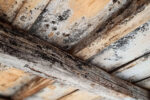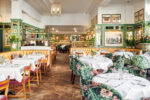Creating Light-Filled Spaces in Traditional Northern Homes

Northern homes, especially those in Yorkshire, often struggle with low levels of natural light. Short winter days, persistent cloud cover, and traditional architectural layouts mean many properties feel dim even at midday. Rooms that rely heavily on electric lighting tend to feel smaller and less comfortable, and this affects both everyday living and long-term energy use.
Today’s glazing technology makes it possible to brighten older northern homes without compromising thermal performance. Modern daylighting solutions respect the heritage of period buildings while bringing interiors up to contemporary standards. Homeowners often look toward roof lanterns and rooflights that transform spaces with daylight, especially when natural brightness is limited by climate or design.
Why Northern Homes Receive Less Natural Light
Homes in northern UK regions receive fewer hours of daylight each year than those in the south. Yorkshire’s latitude, combined with long overcast periods, naturally limits indoor brightness. Traditional construction intensifies the effect. Many period Yorkshire homes include small windows, thick stone or brick walls, and deep room layouts created to retain heat rather than maximise light. These features remain part of the region’s architectural character but make interiors noticeably darker throughout the year. As a result, homeowners often rely on artificial lighting for much longer periods, especially during winter.
How Roof Glazing Transforms Dark Interiors
Overhead glazing offers a direct and effective way to increase natural light in rooms where traditional windows fall short. Roof lanterns capture daylight from several angles, while flat rooflights offer a clean, contemporary look suitable for many existing roofs.
Both systems can dramatically raise brightness levels and transform interiors that previously felt dim or enclosed, especially when paired with daylighting solutions designed to brighten enclosed rooms.
Maximising Daylight Through Placement and Design
Daylight performance depends as much on position as on product type. Because the sun sits lower in the sky across northern regions, south-facing glazing typically provides the most consistent light throughout the year. Installing roof glazing at a pitch of around 30–40 degrees can also increase winter daylight intake. A recent extension project in Leeds used a south-facing pitched lantern set at approximately 35 degrees, and the homeowners reported that their living area remained naturally bright even on short December days.
Interior design choices further influence how daylight spreads through a room. Light-coloured walls with a satin finish help reflect more brightness and carry it deeper into the space. Mirrors placed opposite glazing intensify the overall effect and make rooms feel larger. Low-profile or open-legged furniture avoids blocking light pathways and keeps the room feeling open. Glazed internal doors also help daylight travel between adjoining spaces, which is especially useful in longer or more enclosed layouts. For homeowners exploring design insights on maximising natural daylight, these adjustments work together to ensure that each room benefits as much as possible from the available daylight.
Balancing Daylight With Warmth and Energy Efficiency
Modern glazing systems are engineered to retain heat while maximising natural light, and most new rooflights and lanterns meet or surpass the UK requirement of 1.6 W/m²K for thermal performance. This balance is achieved through a combination of advanced features. Low-emissivity coatings help keep warmth inside during winter, while solar-control glass reduces the risk of overheating in the summer months. Thermally broken frames minimise cold spots around the edges of the installation, and insulated upstands prevent heat loss at key junction points, supporting an approach that aligns with energy-efficient daylighting design.
Together, these innovations allow northern homes to maintain a comfortable, stable indoor temperature while still benefiting from significantly brighter interiors. In many properties, the improvement in daylight can also reduce the need for artificial lighting, helping to lower overall energy use.
Planning, Installation, and Maintenance Essentials
Before installation, homeowners should check whether planning permission is required. Standard rooflights usually fall under permitted development, although properties in conservation areas or those that are listed may need formal approval. Installation time also varies depending on the product. Simple flat rooflights can often be fitted within a single day, while roof lanterns generally require two or three days to complete. Weather conditions play an important role as well, since dry periods are best for carrying out roof work safely and efficiently.
Maintenance for modern glazing systems is typically straightforward. Self-cleaning glass helps minimise the need for frequent washing, and a periodic inspection of seals every few years ensures continued protection against moisture.
A Practical Path to Brighter Northern Homes
Bringing daylight into older northern properties requires thoughtful upgrades that respect both structure and heritage. With modern glazing solutions, improved placement, and considered interior design, even the darkest Yorkshire homes can be transformed into warm, bright, and welcoming spaces.
Enhanced daylight not only improves comfort and wellbeing but can also reduce reliance on artificial lighting. Many homeowners look into best methods for maximising natural light at home when planning upgrades, and high-quality roof glazing remains one of the most effective ways to enhance daily living and increase property appeal.
Brighter interiors are achievable even in older northern homes when thoughtful design, modern glazing, and well-planned installation come together. By combining daylighting strategies with energy-efficient features, homeowners gain spaces that feel warmer, more open, and more comfortable throughout the year. These upgrades also reduce reliance on artificial lighting and contribute to long-term efficiency. With the right approach, even the dimmest rooms can become inviting, light-filled places that enhance daily living.










